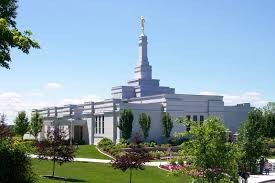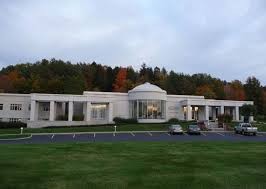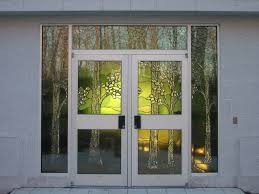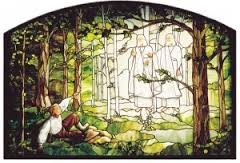Palmyra New York LDS Temple
Introduction
Text-to-speech Audio
Images
Palmyra New York Temple

Hill Cumorah Visitor Center

Front doors to temple. Stained glass images represent the Sacred Grove

Stained glass image within temple depicting the First Vision

Backstory and Context
Text-to-speech Audio
The Palmyra New York Temple is the 77th operating temple of The Church of Jesus Christ of Latter-day Saints.
The site for the Palmyra New York Temple is in an area prominent in the early history of the LDS church. Nearby is the grove of trees known as the Sacred Grove in which the founder and first prophet of the church, Joseph Smith Jr., reported having a vision in which he saw God the Father and Jesus Christ, an event known as the First Vision. The temple grounds, on the border between the towns of Manchester and Palmyra, are also on the grounds of the original Smith Family Farm. The church itself was organized thirty miles away in Fayette, New York, April 6, 1830
At the groundbreaking ceremony, held May 25, 1999, LDS Church president Gordon B. Hinckley commented on the area's rich history, saying that it was in that locale that Mormonism truly began. Hinckley also marveled at how much the church had grown since its founding in 1830.
Local reaction to the new temple was positive and more than 30,700 visitors toured the new temple before its dedication. The temple serves about 18,000 members within seven stakes. The Palmyra New York Temple was dedicated on April 6, 2000, the 170th anniversary of the organization of the church. While only about 1,200 members attended the dedicatory sessions within the temple itself nearly 1.5 million members took part through media broadcasts throughout the United States and Canada.
The Palmyra New York Temple has a total of 10,700 square feet, two ordinance rooms, and two sealing rooms. The exterior is white marble. Forty art glass windows inside the temple depict local events in LDS Church history. A gold statue of the Angel Moroni tops the single spire. Ornately carved cherry wood railings, wainscoting, and moldings line the halls, along with hand-sculpted carpeting.
